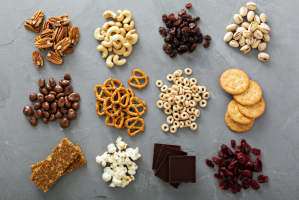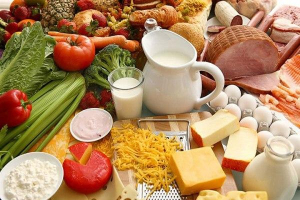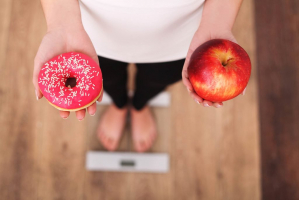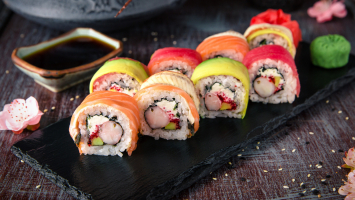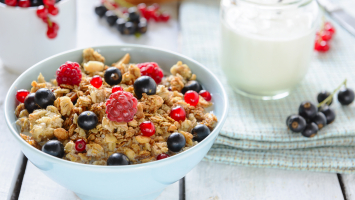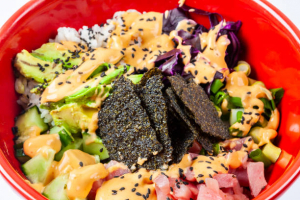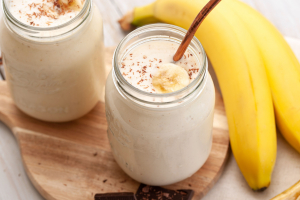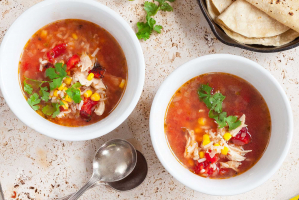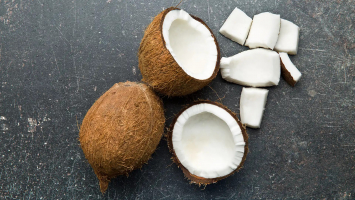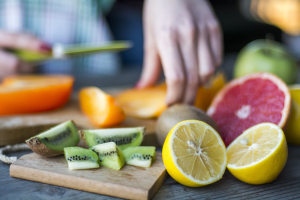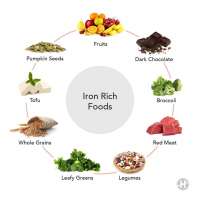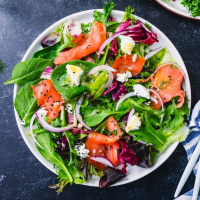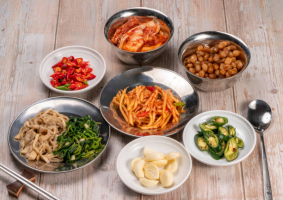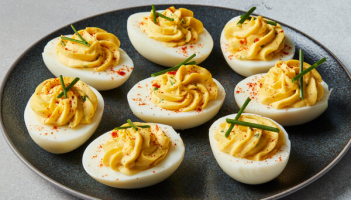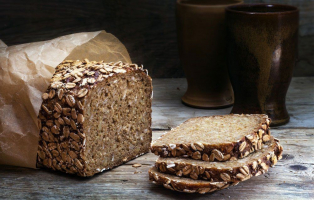Top 10 Best Healthy Ancient Grains
Ancient grains are a group of grains and seed-like grains, called pseudocereals. They are currently gaining popularity in Western countries. This is because ... read more...they are often less processed and have higher levels of fiber, vitamins, and minerals than other widely consumed grains like corn, rice, and modern wheat. Some of the healthiest ancient grains are listed below.
-
Amaranth has been grown for more than 8,000 years and is a healthy, gluten-free grain. Cooked amaranth, which weighs 246 grams per cup, contains:
- Calories: 251
- Carbs: 46 grams
- Protein: 9 grams
- Fat: 4 grams
- Fiber: 5 grams — 20% of the Daily Value (DV)
- Manganese: 91% of the DV
- Magnesium: 38% of the DV
- Iron: 29% of the DV
Amaranth's excellent nutrient profile has been responsible for a number of benefits, including a reduced risk of heart disease and inflammation. For instance, compared to diets high in other grains, an animal study indicated that a diet high in amaranth significantly reduced total cholesterol while increasing HDL (good) cholesterol levels. It is simple to substitute amaranth for quinoa, couscous, and rice. Amaranth can also be used to thicken and add bulk to soups and stews.
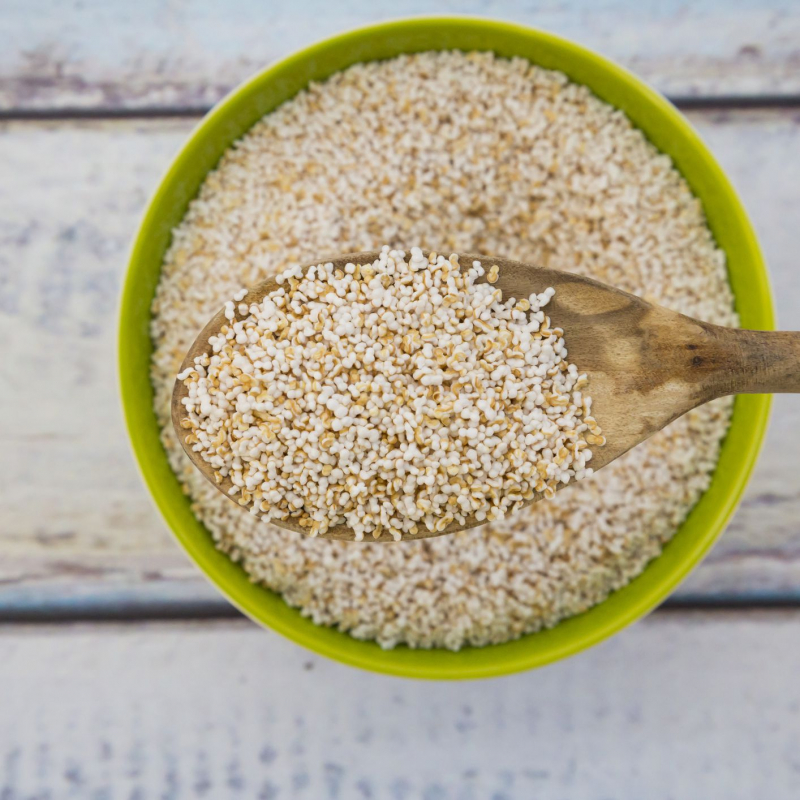
Amaranth 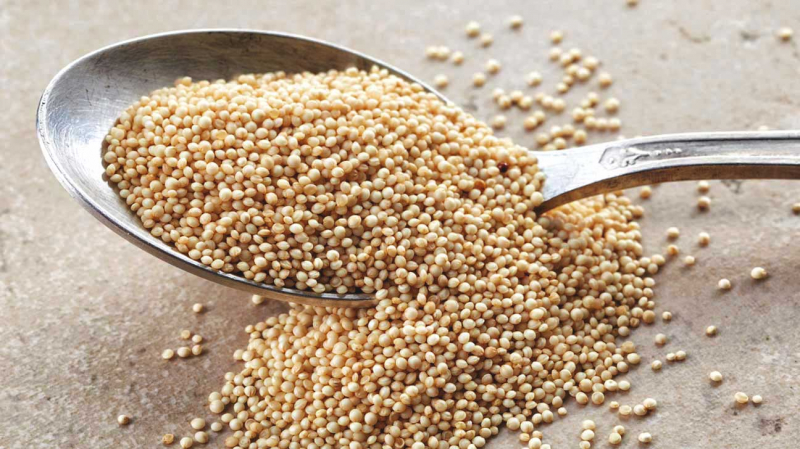
Amaranth -
Although it is best known as an ingredient of bird seed, millet is a healthy, historical pseudocereal that is regarded as a staple in China, India, Africa, Ethiopia, and Nigeria. 174 grams of cooked millet, or one cup, provides:
- Calories: 174
- Carbs: 41 grams
- Protein: 6 grams
- Fat: 2 grams
- Fiber: 2 grams — 8% of the DV
- Manganese: 21% of the DV
- Magnesium: 19% of the DV
- Thiamine (vitamin B1): 15% of the DV
Numerous nutrients found in millet have been related to lowered inflammation, lowered risk of heart disease, and improved blood sugar control. For example, switching out rice for millet in a meal resulted in a 27% decrease in post-meal blood sugar levels in 105 patients with type 2 diabetes, according to a study. It is both versatile and gluten-free, millet. It can be used in place of other grains such as rice, couscous, and quinoa or as a hot breakfast cereal.
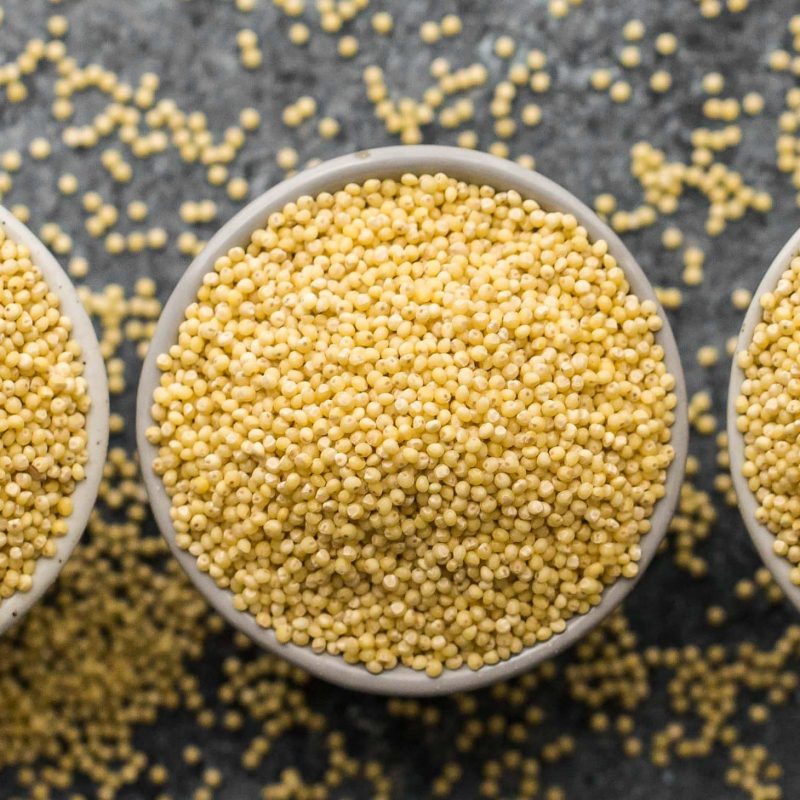
Millet 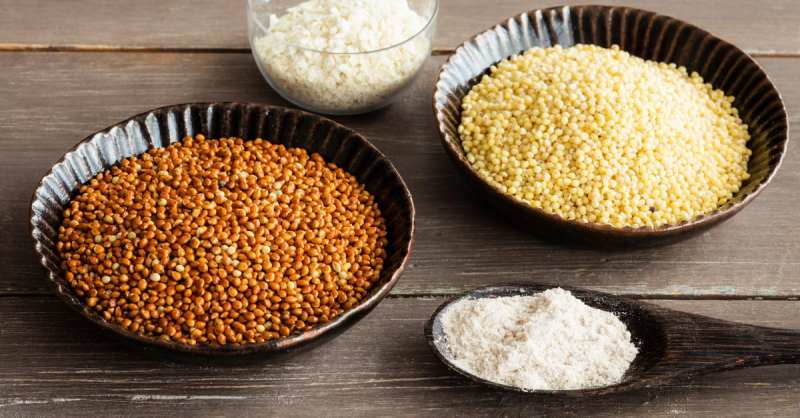
Millet -
Khorasan wheat, often known as kamut, is a nutrient-dense grain with a high fiber content that has been associated to health benefits. 172 grams of cooked kamut in one cup provides:
- Calories: 227
- Carbs: 48 grams
- Protein: 10 grams
- Fat: 1 gram
- Fiber: 7 grams — 30% of the DV
- Selenium: 100% of the DV
- Zinc: 29% of the DV
- Niacin (vitamin B3): 25% of the DV
Kamut may be particularly helpful for lowering LDL (bad) cholesterol and blood sugar levels, two risk factors for heart disease. Compared to a semi-whole-grain diet, a kamut-based diet reduced total cholesterol by 4%, LDL (bad) cholesterol by 8%, and blood sugar levels by 4% in a 4-week study of 22 participants. It also suppressed the hormones that cause inflammation. But gluten is present in this grain, making it unsuitable for those who have celiac disease, non-celiac gluten sensitivity, or wheat allergy.
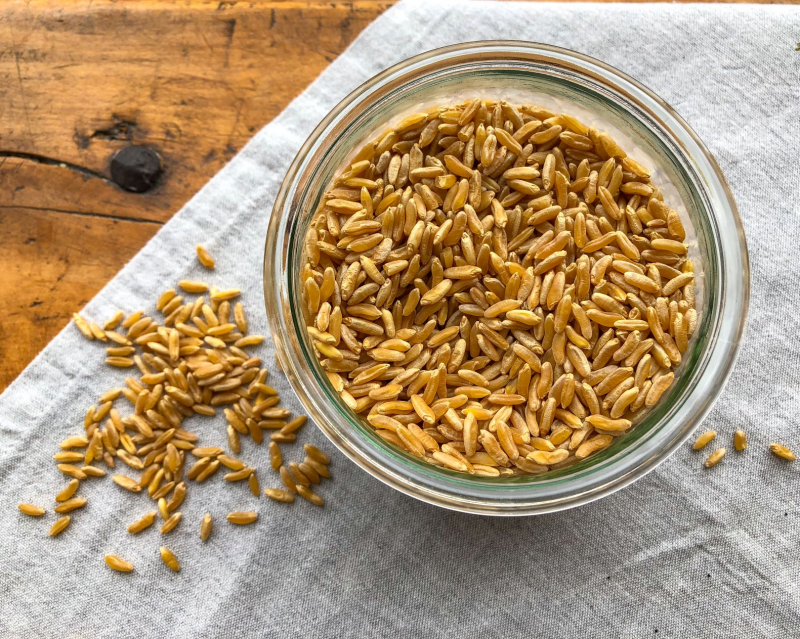
Khorasan wheat (kamut) 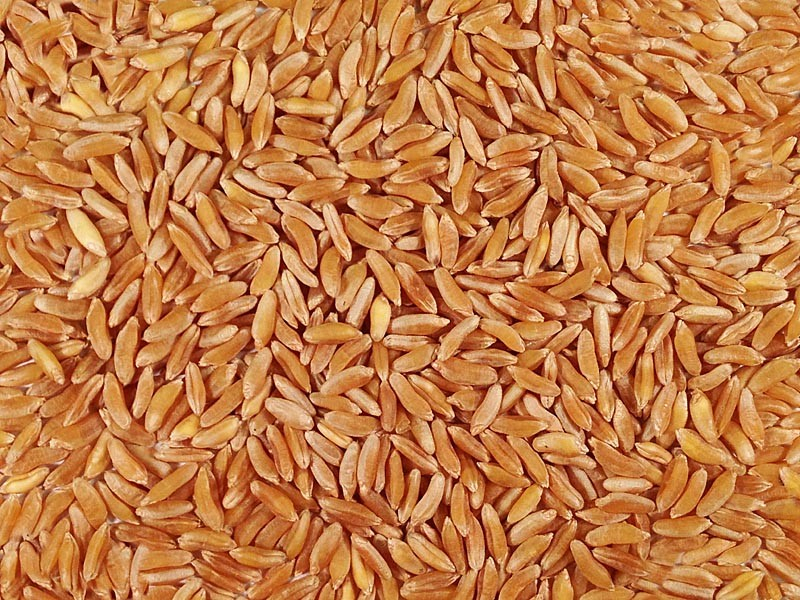
Khorasan wheat (kamut) -
The fifth-most popular grain in the world and a great source of nutrients is sorghum. Uncooked sorghum, at 3.5 ounces (100 grams), offers:
- Calories: 329
- Carbs: 72 grams
- Protein: 11 grams
- Fat: 3 grams
- Fiber: 7 grams — 27% of the DV
- Manganese: 70% of the DV
- Magnesium: 39% of the DV
- Copper: 32% of the DV
- Selenium: 22% of the DV
In addition to being rich in nutrients, sorghum is a good source of potent polyphenol plant substances including anthocyanins and phenolic acids, which serve as antioxidants in your body. Free radicals are potentially harmful molecules that can damage cells and raise your chance of developing diseases when they build up in your body. Antioxidants neutralize free radicals. Sorghum, contrary to many other grains, is naturally gluten-free and is simple to grind into flour for baking without gluten. It is quite versatile thanks to its mild flavor.
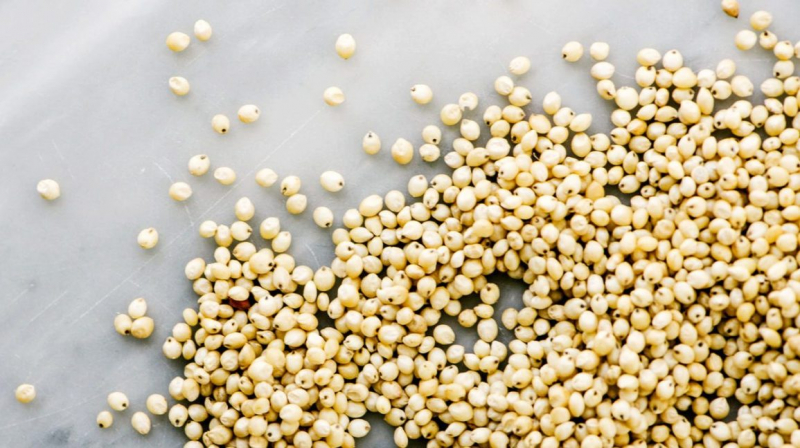
Sorghum 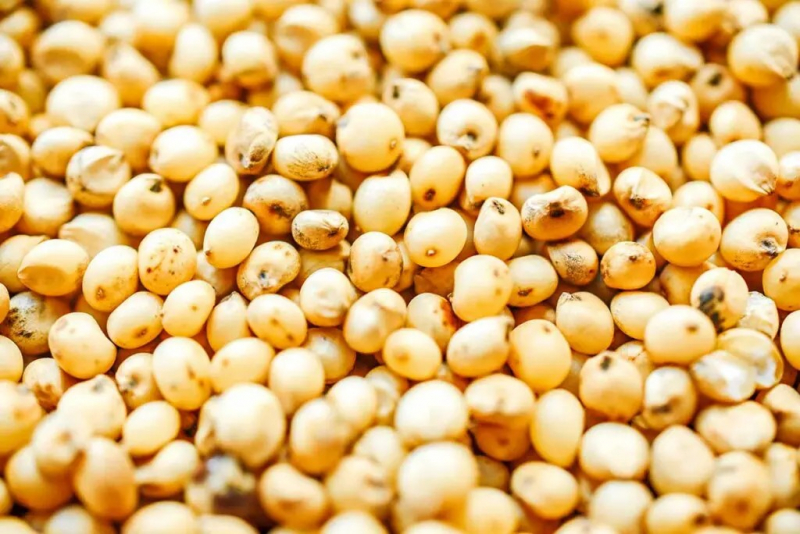
Sorghum -
Teff, which is roughly 0.7–1% the size of a wheat kernel, is the smallest grain. Uncooked teff weighs 3.5 ounces (100 grams) and contains:
- Calories: 367
- Carbs: 73 grams
- Protein: 13.3 grams
- Fat: 2 grams
- Fiber: 8 grams — 32% of the DV
- Manganese: 402% of the DV
- Copper: 90% of the DV
- Vitamin C: 98% of the DV
- Magnesium: 44% of the DV
- Iron: 42% of the DV
- Phosphorus: 34% of the DV
- Zinc: 33% of the DV
The small teff grains are packed with essential nutrients including iron and magnesium. Additionally, they are among the few grains that contain vitamin C, a vitamin that is essential for the strength of the bones and immune system. One study conducted on 592 pregnant Ethiopian women found that eating teff daily was linked to a much lower incidence of anemia than eating it less frequently. Teff can be added to oatmeal, soups, stews, and gluten-free baked goods and is also free of gluten.
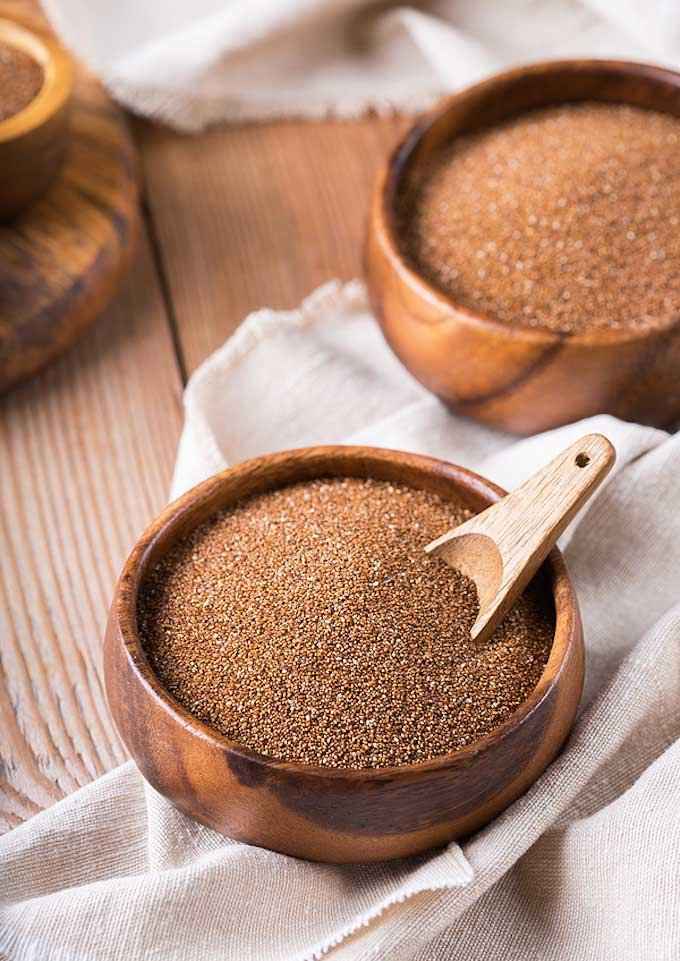
Teff 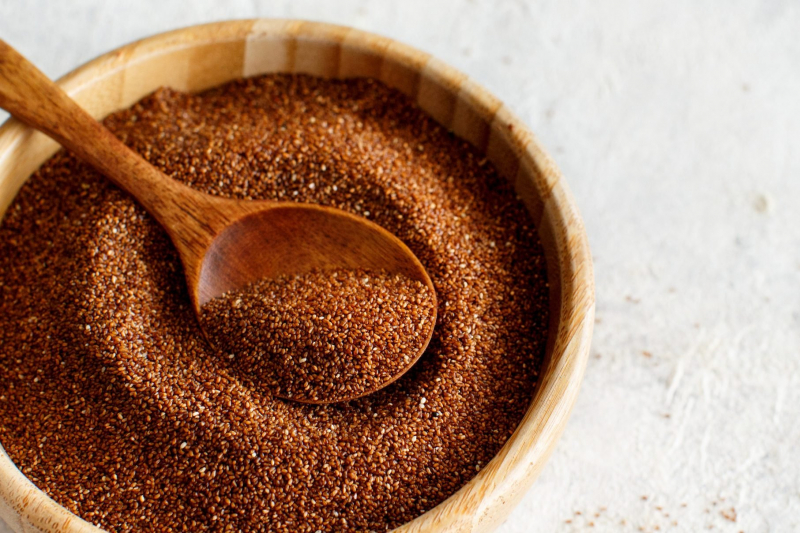
Teff -
A common ingredient in Middle Eastern cuisine is freekeh. It contains a variety of nutrients and strong carotenoid compounds. Uncooked freekeh offers the following per 3.5 ounces (100 grams):
- Calories: 325
- Carbs: 65 grams
- Protein: 20 grams
- Fat: 2.5 grams
- Fiber: 10 grams — 40% of the DV
- Iron: 20% of the DV
Freekeh is a particularly good source of lutein and zeaxanthin, two carotenoids. Increased consumption of these substances has been associated with a decreased risk of age-related macular degeneration and cataracts, two degenerative eye disorders. People with celiac disease and other gluten-related disorders should stay away from freekeh because it includes gluten. Freekeh has a chewy texture similar to that of brown rice with an earthy, nutty flavor. It is a versatile grain that tastes great in soups, stews, casseroles, and salads in the summer.
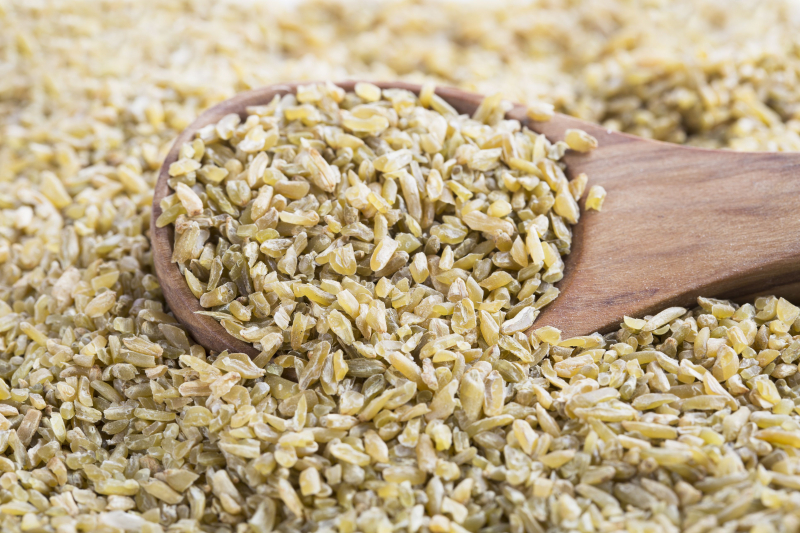
Freekeh 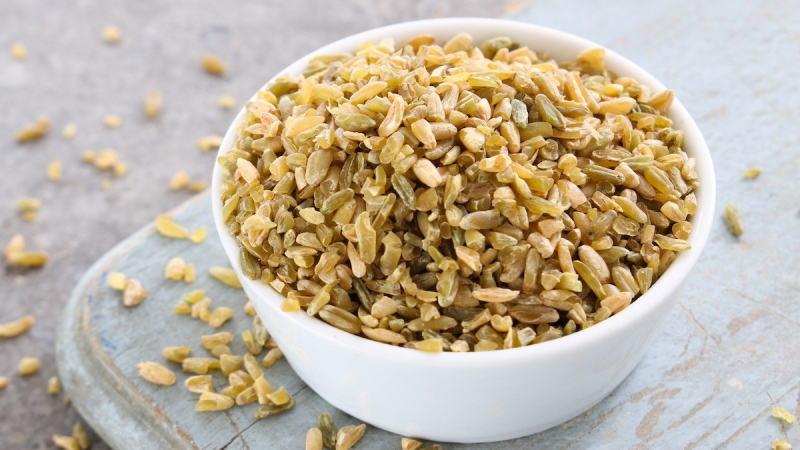
Freekeh -
The ancient wheat-based grain called farro has gained popularity recently. Emmer farro, uncooked, weighs 3.5 ounces (100 grams) per pack:
- Calories: 362
- Carbs: 72 grams
- Protein: 13 grams
- Fat: 2 grams
- Fiber: 11 grams — 42% of the DV
- Niacin (vitamin B3): 53% of the DV
- Zinc: 44% of the DV
- Magnesium: 31% of the DV
Farro is rich in antioxidants including polyphenols, carotenoids, and phytosterols in addition to the nutrients mentioned above, which may help lower your chance of developing a number of chronic diseases like heart disease and some types of cancer. Farro also has a high protein and fiber content, which may help you lose weight by reducing your hunger and keeping you full after meals. This gluten-containing grain can be consumed similarly to other grains and is simple to incorporate into your diet. It can be included in recipes like soups and salads.
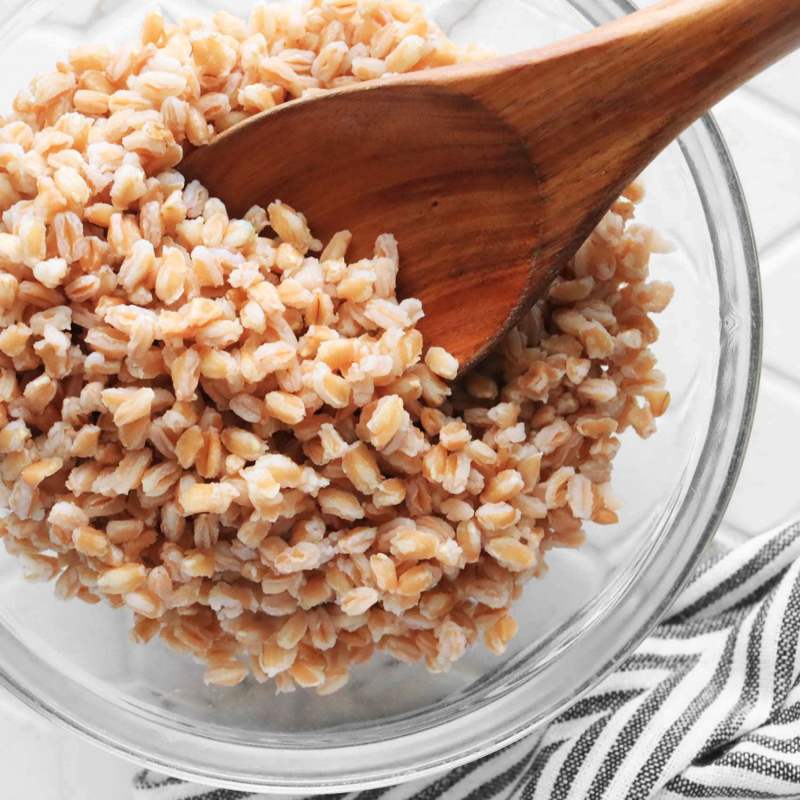
Farro 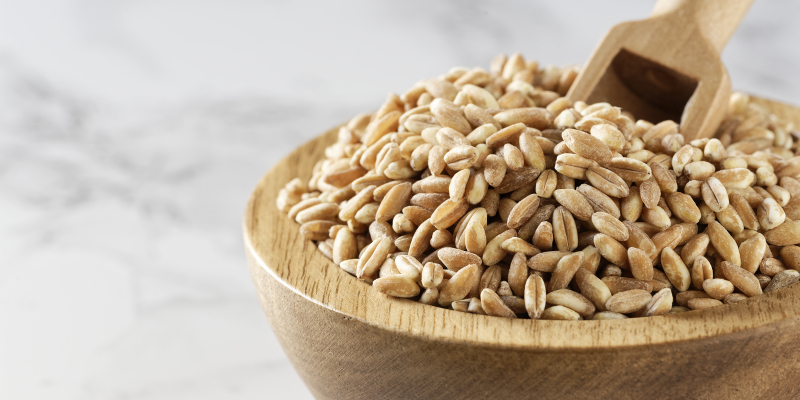
Farro -
Barley is one of the most commonly consumed ancient grains in the American diet and is quite nutrient-dense. 157 grams of cooked barley, or one cup, provides:
- Calories: 193
- Carbs: 44 grams
- Protein: 4 grams
- Fat: 1 gram
- Fiber: 6 grams — 24% of the DV
- Selenium: 25% of the DV
- Iron: 12% of the DV
- Thiamine (vitamin B1): 11% of the DV
A type of soluble fiber called beta-glucans, which dissolves in water and forms a gel-like substance in the stomach, is abundant in barley. Heart health and beta-glucans are related. When compared to control diets, meals higher in beta-glucans from barley significantly lowered LDL (bad) cholesterol levels and increased HDL (good) cholesterol levels, according to a study of 14 trials involving 615 people. Barley is a cheap, generally accessible food. However, it contains gluten. It can be used as a side dish in place of other grains or as an ingredient in salads, soups, and stuffings.
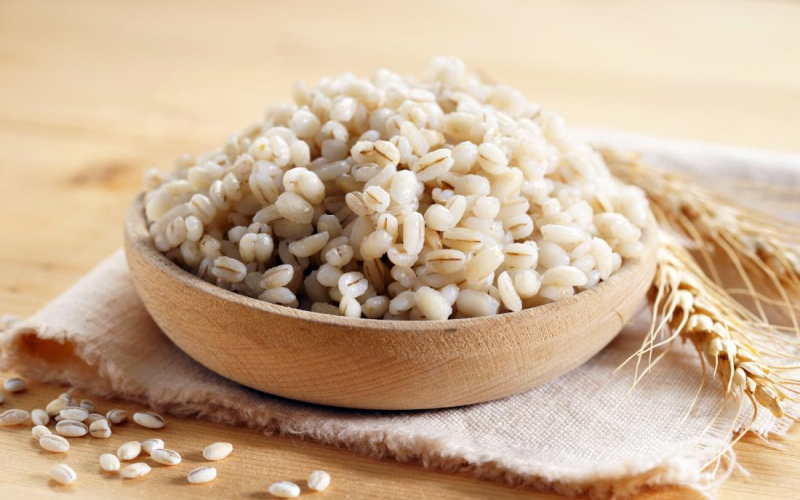
Barley 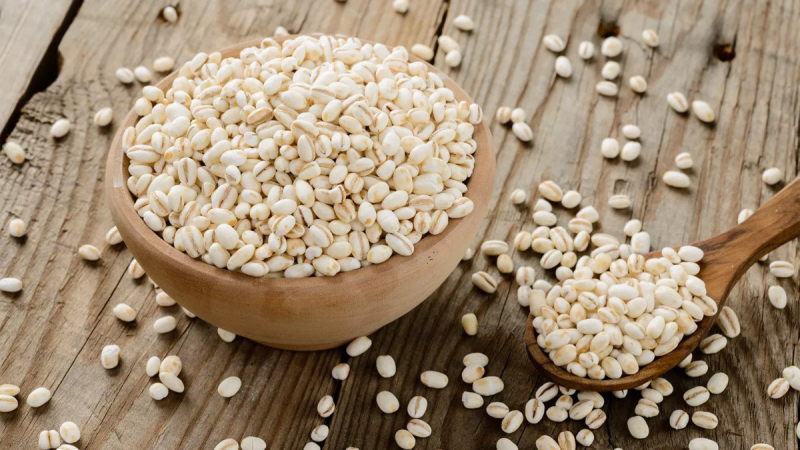
Barley -
Popular and gluten-free ancient grain quinoa has many remarkable health advantages. Cooked quinoa in one cup (185 grams) is rich in:
- Calories: 222
- Carbs: 39 grams
- Protein: 8 grams
- Fat: 4 grams
- Fiber: 5 grams — 21% of the DV
- Manganese: 51% of the DV
- Magnesium: 28% of the DV
- Phosphorus: 23% of the DV
- Folate: 19% of the DV
- Zinc: 18% of the DV
Strong antioxidants found in quinoa, like quercetin and kaempferol, have been proven in animal experiments to have anti-inflammatory and anticancer properties. Additionally, this grain offers 8 grams of plant-based protein every 1-cup (185-gram) serving, making it a superior source of this nutrient. The most filling macronutrient is protein, therefore increasing your intake of meals high in protein may help control your appetite and aid in weight loss. Quinoa is commonly available in supermarkets and health food stores as a result of its popularity. It has a moderate flavor and is simple to add to lunches, dinners, and breakfast bowls.
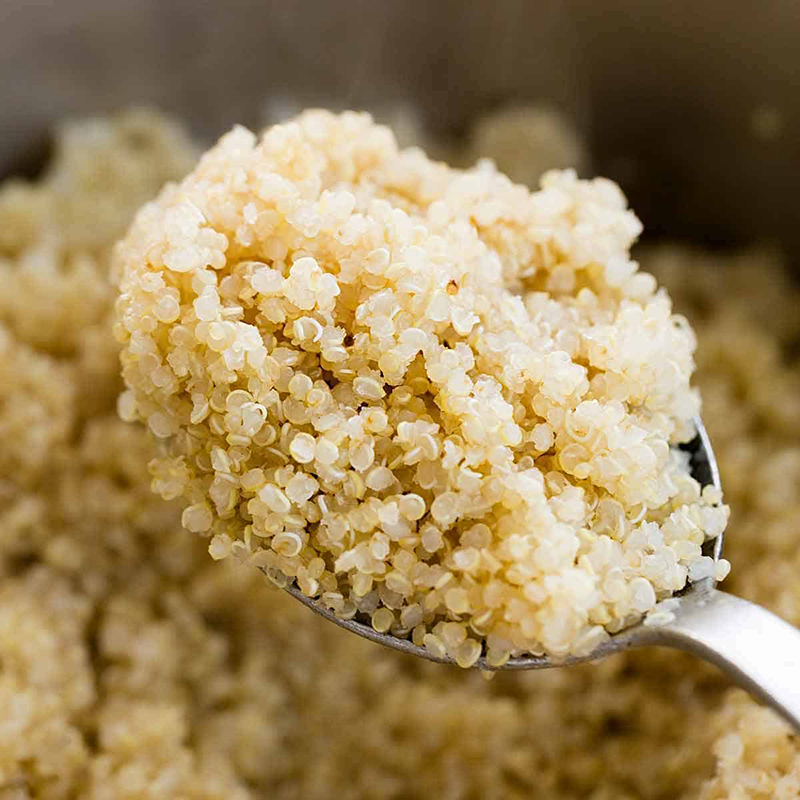
Quinoa 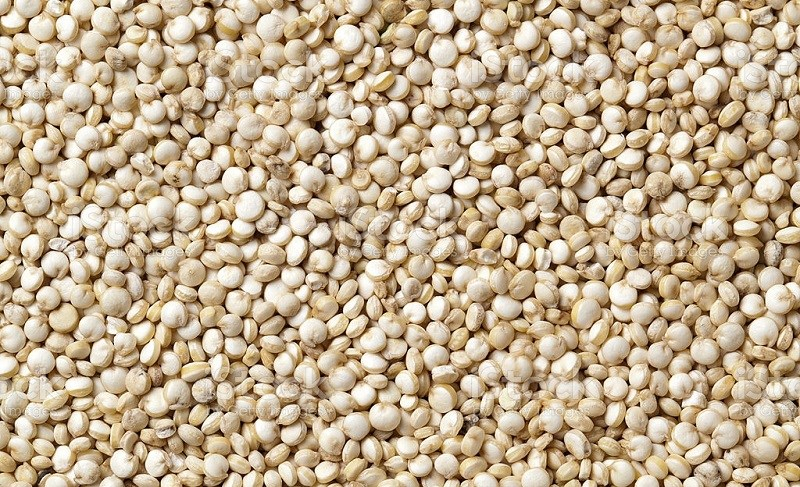
Quinoa -
Cracked wheat, often known as bulgur, is a common ingredient in Middle Eastern cuisine. When cooked, one cup (182 grams) of bulgur provides:
- Calories: 151
- Carbs: 34 grams
- Protein: 6 grams
- Fat: 1 gram
- Fiber: 8 grams — 33% of the DV
- Manganese: 48% of the DV
- Copper: 15% of the DV
- Magnesium: 14% of the DV
Bulgur is often made from cracked durum wheat and used in salads like tabbouleh or as a rice substitute in dishes like pilaf. Its high fiber content may aid in digestive improvement, blood sugar regulation, weight loss, and heart health. Although the majority of people consider bulgur to be healthy, those who cannot eat wheat or gluten should avoid it. Bulgur is frequently sold partially cooked, or parboiled, making it easy work of preparing it.
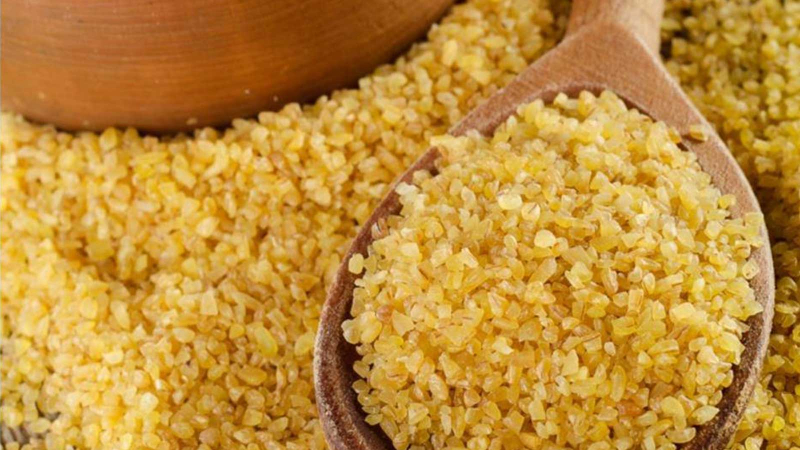
Bulgur (cracked wheat) 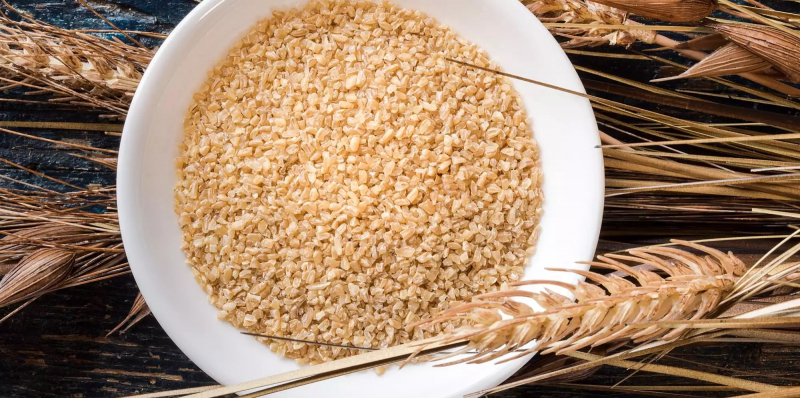
Bulgur (cracked wheat)












